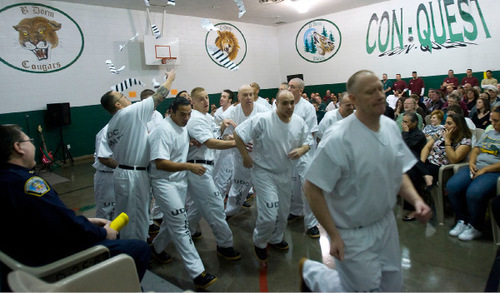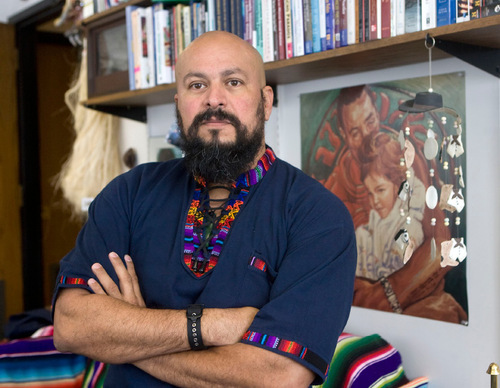This is an archived article that was published on sltrib.com in 2010, and information in the article may be outdated. It is provided only for personal research purposes and may not be reprinted.
Like other inmates, gang members in Utah prisons get a chance to learn how to cook, repair electronics, even knit. Classes can teach them how to set personal goals, control anger and change thought patterns.
But the gang mind-set revolves around a group, setting gangsters apart from other criminals. Gang investigators point to another unique problem in Utah: the rise of multigenerational gangs in which children are raised into a criminal lifestyle embraced by their parents.
The combination, experts say, is why gang members re-entering society after a prison stint often stick with their gangs — and why corrections systems such as Utah's are exploring the creation of specialized programming to rehabilitate gangsters.
"You don't see yourself as an individual anymore. You see yourself in a group, and a big part of that is a sense of belonging," said University of Utah assistant professor Moises Prospero, whose specialties include gang issues. "Things happen in a group that may not happen when you're by yourself. You're more likely to follow what they told you to do: Let's go fight. Let's go sell drugs."
Prison officials this spring told the Utah Governor's Gang Task Force they have tasked Prospero with researching gang-specific curricula that could be offered by Adult Probation & Parole (AP&P) in both the adult and juvenile systems.
Prospero's ongoing research list includes several programs used around the country, including the federally funded Intensive Aftercare Program. The program helps juvenile delinquents serving time re-enter the community, but could be tailored to adults. Caseworkers help youths, whose only support system may be the gang, to build new, positive networks at school and at work, and among family and friends.
Yet there is little data available to determine the effectiveness of such programs, and Prospero cautions a program must be coupled with assistance to find housing, a job and a positive network of friends on the outside.
The most recent statistics show about 17 percent of inmates at Utah State Prison are documented gang members — on par with national averages of about 15 to 20 percent, said Jim Hudspeth, a supervisory investigator for the Utah Department of Corrections.
The numbers and results of programs such as the Utah State Prison's Con-Quest substance abuse program may make programs tailored to gangsters living in the prison and those out on parole a viable option.
While the prison's general population has about a 65 percent recidivism rate, Con-Quest participants record an average recidivism rate of 25 percent.
At Con-Quest, inmates live together in a dorm setting at the prison. The intensive program includes daily coursework and therapy. The average resident stays in the program between 12 and 18 months.
But gang-specific programming in prison could put participants' lives in danger from fellow gang members, say Utah prison officials who believe it would be most effectively run by AP&P.
Hudspeth notes the realities of any program: gang members themselves must have a desire to change for any initiative to be effective.
Next Task force to tackle reform
P The Utah Governor's Gang Task Force next meets on Aug. 26, when implementing Corrections programs aimed at reforming gang members will likely be discussed.









